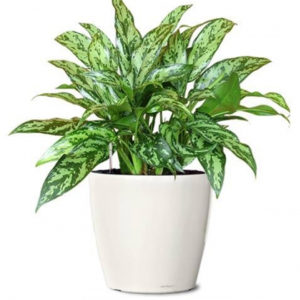Light: Find the area that receives less indirect light. Place your plant far from doors, air vents and windows in order to ensure it won’t suffer from drafts.
Fertilizer: the species at least 2 times per month. Water them from spring until autumn with an appropriate solution (1 tsp. soluble 20-20-20 analysis fertilizer and 1 gallon of water).
Water: Water the plant when the top 2 inches of the soil start getting dry.
Care: One of the basic care instructions includes wiping the leaves with a moistened cloth to remove dust and dirt.
Category: Plants Options
Related products
-
 Quick view
Quick viewChamaedorea palm
Light: A light position but will also handle some shade. Temp: Average warmth will need misting if its really hot. Water: Quite regularly in the growing season and rarely over the winter months. Feeding: A liquid feed every month or so. Tip: Brown tips on the leaves mean the humidity needs to be raised, give it a misting.Read more -
 Quick view
Quick viewCordyline fruticosa
Soil: Rich, organic soil that doesn't dry out too much. Light: Good light will enhance colors. Situate indoor containers in an area that receives bright, indirect light. Fertilizer: Grow the Cordyline fruticosa in a draining container that is one time larger than its root ball. Fill the container with a well-drained potting mix amended with a slow-release fertilizer. Follow package instructions concerning fertilizer amounts. Water: Water the container regularly to keep the soil moist but not soggy. Water until it runs from the container's bottom drain holes. Humidity: Fill a plastic spray bottle with water and mist indoor-grown Cordyline fruticosa plants weekly to create humidity.Read more -
 Quick view
Quick viewCordyline
Light: Bright light, but avoid direct sunlight in unhabituated plants. Water: Keep soil continuously moist, but reduce watering in the winter. High humidity is preferred. Temperature: Above 16ºC is preferred. Avoid cold drafts if temperature drops lower. Soil: Rich, well-drained potting mix. Fertilizer: Feed in spring with slow-release pellets or weekly during growing season with liquid fertilizer.Read more -
 Quick view
Quick viewHoweia Forsteriana
Light: Find an area that receives indirect light through a window; it does not necessarily need to be an extremely bright spot. Water: Water only when the top inch of soil starts to dry out. Over watering can lead to root rot if the soil mix does not drain fast enough. Fertilizer: Excessive fertilization may cause the tips of lower leaves to turn brown and die. Browning of leaves can also be caused by dry air and/or lack of water.Read more



Reviews
There are no reviews yet.